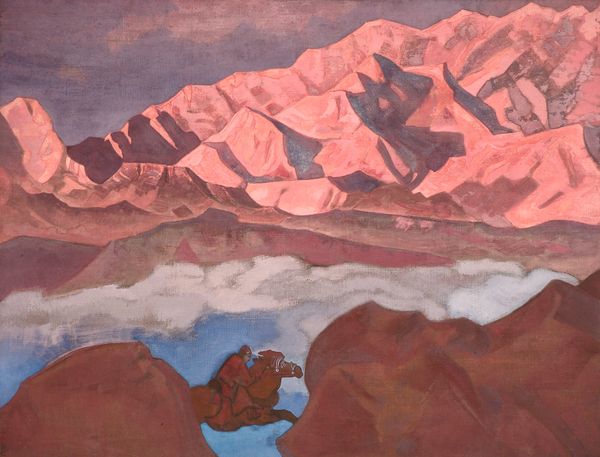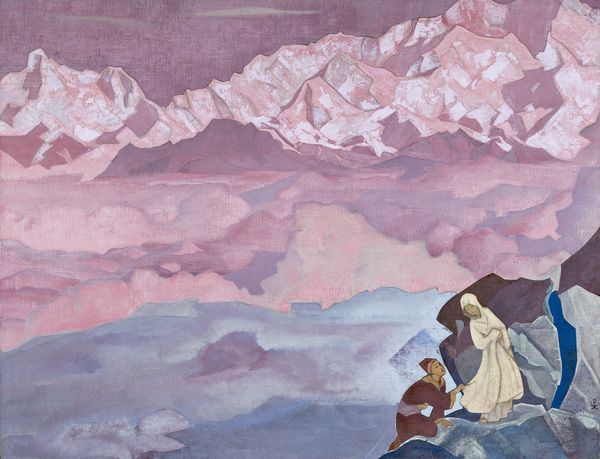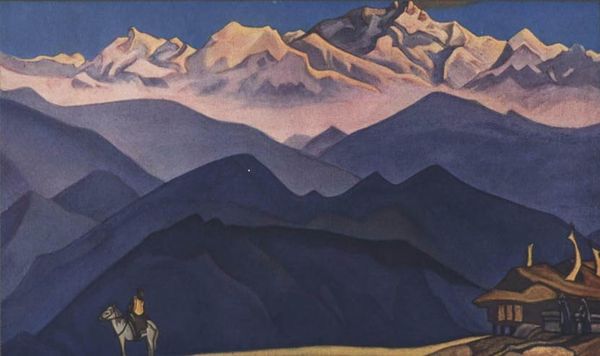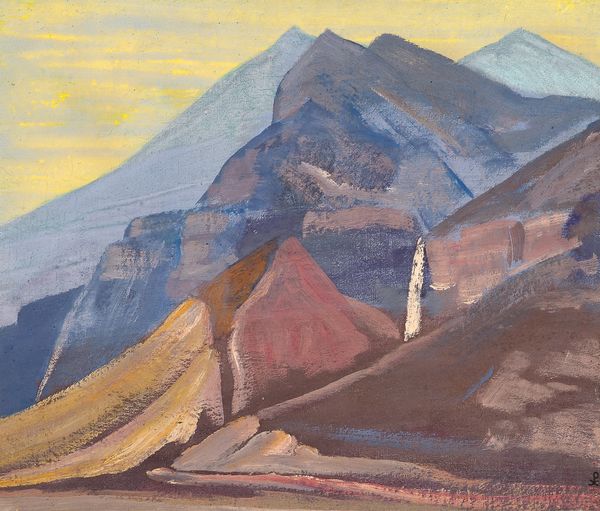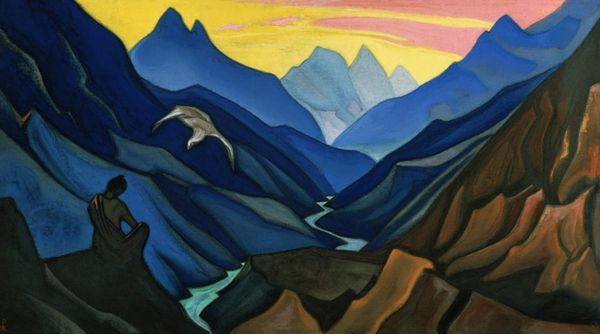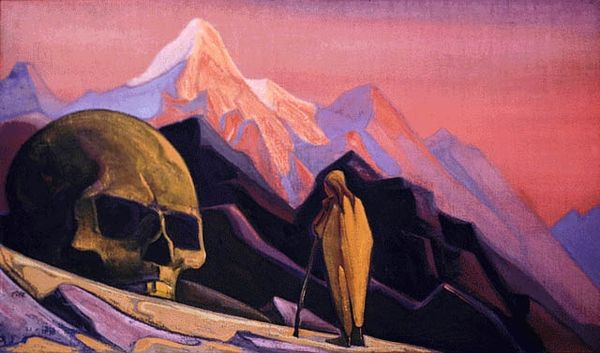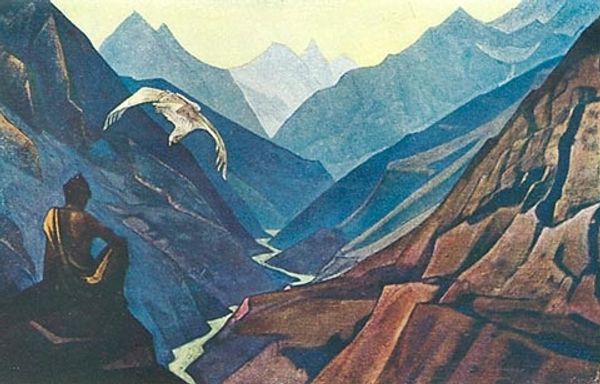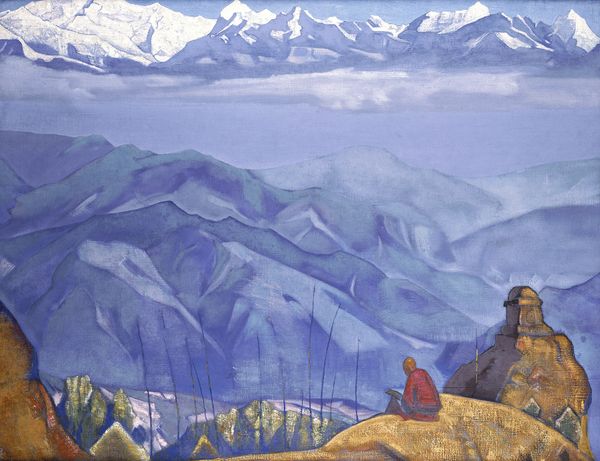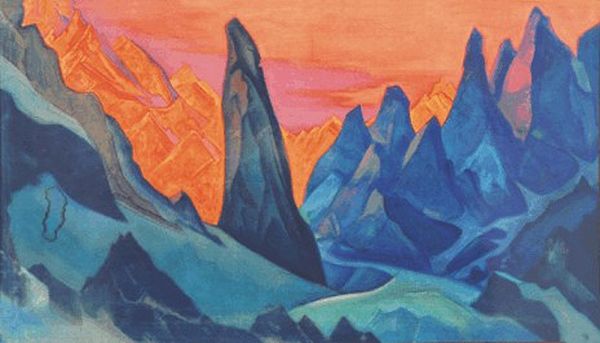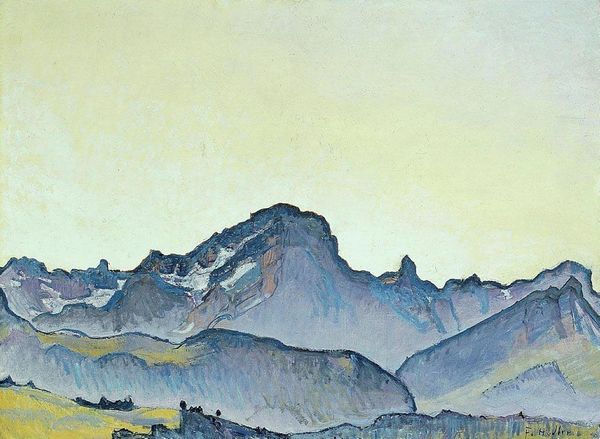
painting, oil-paint
#
narrative-art
#
painting
#
prophet
#
oil-paint
#
landscape
#
figuration
#
oil painting
#
mountain
#
expressionism
#
orientalism
#
expressionist
Dimensions: 75 x 117 cm
Copyright: Public domain
Editor: This is Nicholas Roerich's "Mohammed the Prophet," painted in 1925 using oil paint. It's a stunning landscape, but the figure really draws my eye. He seems so solitary against the backdrop of these otherworldly mountains. What do you see in this piece? Curator: The solitary figure becomes emblematic of a powerful intersection between spiritual leadership, Orientalism, and early 20th-century anxieties surrounding cultural identity. Roerich, known for his theosophical leanings, presents Mohammed not just as a religious figure, but as a universal spiritual guide set against a mystical landscape. This piece engages with Orientalist tropes that often exoticized and romanticized Eastern cultures. The simplification of the landscape, with its stylized mountains, flattens cultural specificity and presents a homogenized "East." How does Roerich's representation contribute to, or challenge, existing power dynamics within Orientalist discourse? Editor: That's fascinating. So, it's not just a depiction, but an engagement with complex historical and cultural themes? Curator: Exactly. Consider the historical context: post-World War I, with anxieties surrounding cultural shifts and a longing for spiritual grounding. The simplification of form echoes Expressionist aesthetics. Also, what does it mean to depict a prophet whose tradition largely avoids figural representation? This piece raises questions about Roerich’s own cultural lens and the power dynamics inherent in artistic representation across cultures. It encourages us to confront the historical context that produced this representation and to explore its lasting impact on cross-cultural understandings. Editor: This has really opened my eyes to how much context is embedded in what I initially perceived as simply a beautiful landscape! Curator: Art invites us to delve deeper into these dialogues, enriching our understanding of the past and its continued relevance in shaping contemporary identities. Editor: I'll definitely look at art with more questions going forward. Thank you.
Comments
No comments
Be the first to comment and join the conversation on the ultimate creative platform.
